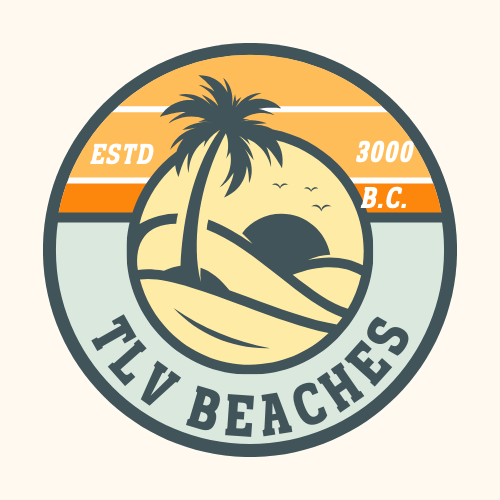When planning a seaside getaway, you’ve likely encountered the terms beach, shore, and coast used interchangeably. While they all refer to areas near bodies of water, each term has distinct meanings. Let’s dive into the nuances of these words, explore their differences, and discover examples to help you choose the perfect spot for your next vacation.
What is a Beach?
A beach refers to a landform along the edge of a body of water, such as an ocean, sea, lake, or river, typically covered with loose particles like sand, pebbles, shells, or gravel. Beaches are prime destinations for relaxation, swimming, and other recreational activities.
Key Features of a Beach
- Specific Area: A beach is usually a narrow strip between the water and the land, often with sand or other loose materials.
- Popular for Activities: Sunbathing, swimming, volleyball, and surfing are common beach activities.
Examples of Famous Beaches
- Waikiki Beach, Hawaii
- Known for its soft white sand and calm waters.
- Fun Fact: Waikiki attracts nearly 4 million visitors annually.
- South Beach, Miami, Florida
- A hotspot for nightlife and art deco architecture.
- Boasts 2.5 miles of sandy shores and vibrant culture.
- Bondi Beach, Sydney, Australia
- Famous for surfing and picturesque coastal views.
- Hosts approximately 2.6 million beachgoers each year.
- Tel Aviv Beaches, Tel Aviv, Israel
- Tel Aviv beaches are known for their beauty
- Over 1 million people per year visit!!
What is the Shore?
The shore is the general area where a body of water meets the land. This term encompasses a wider variety of environments than a beach, including rocky areas, cliffs, and marshlands. While all beaches are shores, not all shores are beaches.
Key Features of a Shore
- Broader Definition: Includes beaches, rocky coastlines, and tidal zones.
- Varied Terrain: Can range from sandy to rugged or forested.
Examples of Iconic Shores
- Oregon Shore, USA
- Known for its rugged cliffs and dramatic rock formations, like Haystack Rock.
- The Oregon Coast Trail stretches 382 miles along the shoreline.
- Lake Michigan Shore, USA
- Offers diverse landscapes from sandy dunes to dense forests.
- Fact: It spans over 1,640 miles across four states.
- Galápagos Shores, Ecuador
- Rich in wildlife, such as sea lions and marine iguanas.
- Great for eco-tourism and exploring biodiversity.
What is the Coast?
The coast refers to the entire area where the land meets a large body of water, typically an ocean or sea. It is a broader geographical term that may include beaches, shores, cliffs, and coastal plains. Here is an image of famous Tel Aviv coastline, in Israel. Tel Aviv beaches are well known for their beauty.

Key Features of a Coast
- Extensive Area: Includes multiple ecosystems and geographical features.
- Dynamic Landscapes: Shaped by tides, currents, and weather over time.
Examples of Famous Coasts
- Amalfi Coast, Italy
- Known for its dramatic cliffs and colorful villages.
- Stretching 34 miles, it’s a UNESCO World Heritage site.
- Pacific Coast, USA
- Spanning California, Oregon, and Washington, with beaches, forests, and mountains.
- Notable spots include Big Sur, Santa Monica, and Olympic National Park.
- Great Ocean Road, Australia
- Features iconic rock formations like the Twelve Apostles.
- Extends 151 miles along Australia’s southern coast.
Comparing Beach, Shore, and Coast
| Aspect | Beach | Shore | Coast |
|---|---|---|---|
| Definition | Narrow strip near water. | General land-water boundary. | Broad region near large water. |
| Terrain | Sandy, pebbly, or shell-filled. | Sandy, rocky, marshy, or forested. | Diverse, including cliffs, plains, and forests. |
| Examples | Waikiki Beach, Bondi Beach | Oregon Shore, Galápagos Shores | Amalfi Coast, Pacific Coast |
| Usage | Recreational and leisure. | General description of water edges. | Broader geographical reference. |
Choosing Your Destination: What Fits Your Travel Style in 2025?
- Relaxation and Activities:
- Go to a beach if you want to lounge in the sun or enjoy water sports!!
- Diverse Landscapes:
- Opt for a shore if you prefer exploring rocky cliffs, marshlands, or tidepools.
- Expansive Exploration:
- Choose a coast for a mix of scenery, from charming seaside towns to dramatic cliffs.
Interesting Facts by the Numbers
- Beaches:
- The U.S. has approximately 12,000 miles of coastline with countless beaches, generating $6 billion in revenue annually from tourism.
- Shores:
- Shoreline erosion affects 70% of the world’s shores, costing billions annually in restoration efforts.
- Coasts:
- Coastal regions are home to 40% of the global population, according to the United Nations.
The TLDR on Beach vs Shore vs Coast
Understanding the differences between beaches, shores, and coasts helps you choose the perfect destination for your next beach trip! Whether you’re seeking the laid-back chill style of a beach, the rugged beauty of a shore, or the expansive beauty of a coast, each offers awesome experiences that caters to different travel preferences.
Start planning your next adventure and explore the world’s beaches, shores, and coasts—you’re sure to find something extraordinary!



Leave a Reply